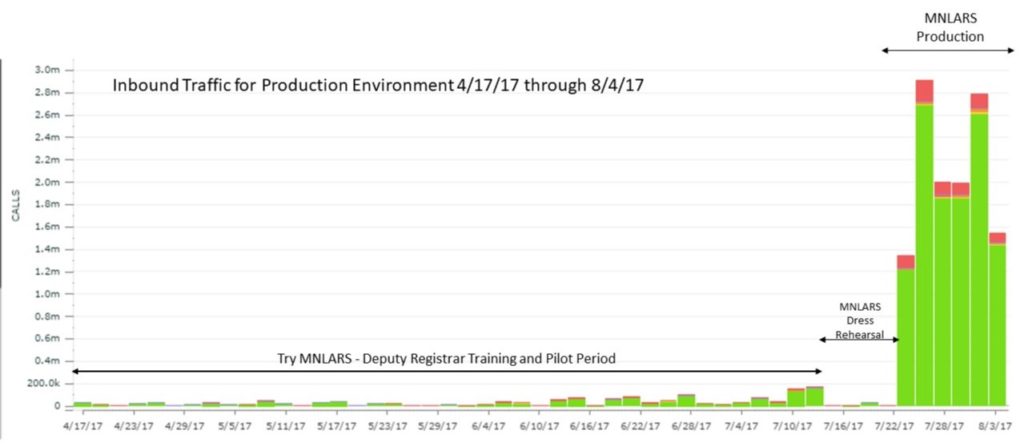On Wednesday, January 30th the OpEd “Why Minnesota can’t get MNLARS right” https://www.minnpost.com/community-voices/2019/01/why-minnesota-cant-get-mnlars-right/ was published resulting in a number of very thoughtful comments, many of them from Deputy Registrars. In reading through those comments, it became clear that the following 10 facts about the Minnesota Deputy Registrars would help the general public evaluate the Deputy Registrar responses.
1. Minnesota has over 170 Deputy Registrars which employ approximately 1500 individuals across the State of Minnesota. About 2/3 of those offices are affiliated with a city or county and about 1/3 are private entities, which can be sold or inherited.
2. Each Deputy Registrar office appointment is proposed by the Department of Public Safety, of which the Department of Vehicle Services is a part and voted on by the MN Legislature.
3. Almost all of the Deputy Registrars belong to the Minnesota Deputy Registrar Association (MDRA) who employs a full-time lobbyist. Given that every single MN House member has a Deputy Registrar office in their area, the DRs have immense political power to maintain the status quo. Also, the Minnesota Auto Dealers Association (MADA) has a full time lobbyist and often joins MDRA in statements and press releases critical of MNLARS.
4. As residents, we can take our business to any Deputy Registrar location however Deputy Registrar offices are guaranteed that no competing DR office will be established within a certain distance of another DR office. So, for example, the St. Paul Sears DR office is guaranteed that another DR office will not be established across the street.
5. By statute, a Deputy Registrar MUST be involved in any vehicle title transfer operation which currently results in a $10 fee to them. Given that fact many Auto Dealers have established close ties with specific Deputy Registrars offices that must, again by law, be involved in any title transfer transaction.
6. Several classes of vehicles (passenger vehicles and motorcycles) can be renewed online. As a resident, by law, I pay a convenience fee, making those transactions more expensive to the resident even though they are cheaper for the State of MN to process.
7. The Deputy Registrars are responsible for their own office expenses (salaries, rent, office supplies, MDRA dues, etc.) but the State of MN provides, at no cost to the DR, all of their license and registration sticker inventory. If an owner of a DR office does not believe the fee revenue is not adequately profitable, they can work with DVS to close down that office and allow another DR to be appointed.
8. Prior to MNLARS, when a resident needed to complete a title transfer they went to a DR office and filled out a bunch of paperwork. The DR collected the fees and sent the stack of paper to the St. Paul DVS office for manual entry and processing. If documents were missing or there were errors with the title forms, DVS sent a letter to the individual to fix the issues resulting in delays issuing the title. After MNLARS, the Deputy Registrar entered the form information into MNLARS while the customer was present. This allowed any questions to be resolved at the DR office as well as assuring the correct documents were present to complete the transaction. An additional side benefit of MNLARS was the updated title information was immediately available to law enforcement. Prior to MNLARS, if a vehicle was involved in a crime before it was processed by DVS (45 to 60 days), law enforcement had to go to hunting through mountains of paper to locate the new owner.
9. Prior to MNLARS, the Deputy Registrars completed a “Daily Report” that listed all of their DVS financial transactions, amounts associated with those transactions, inventory (plates or stickers) associated with the transaction, etc. After MNLARS, all of the financial and inventory information was captured in real time, which is why with certainty we as MN residents now know that all 170 DR offices were paid over $38 million in fees in the first twelve months of MNLARS.
10. One last fact, the Deputy Registrars were given three months to train and practice on a full size, production version of MNLARS prior to the July 2017 release. During those three months we tracked the number of individual logins and the total computer traffic from the Deputy Registrar offices which is shown below. Given the magnitude of the upcoming MNLARS release we were surprised by the following graph, which showed very little Deputy Registrar training and practice traffic prior to the MNLARS launch.

In closing, the facts above are well known to the State of MN and the Department of Vehicles services, however, the Deputy Registrars have a massive advantage in any media matter. The Deputy Registrars, especially the privately-owned offices, can respond to any press release, or OpEd, in this case as they chose, whereas the employees of the State of MN are not able to easily respond to these comments. Since I am no longer an employee of the State of MN I can share this general knowledge that would be extremely difficult for the State of MN employees to share, especially given the immense political power of the MDRA and the MADA.
